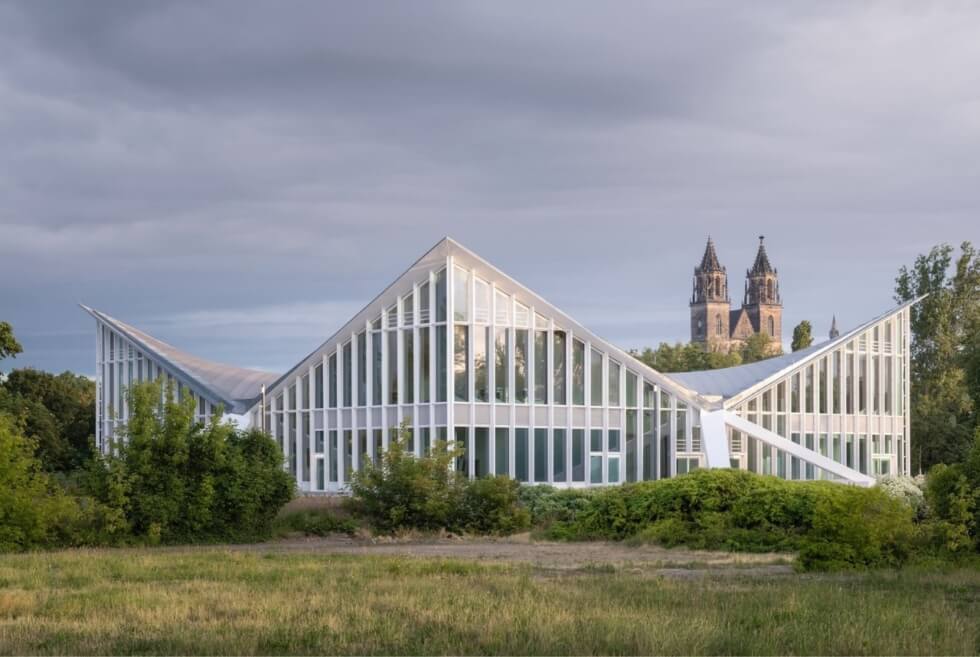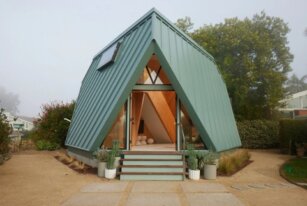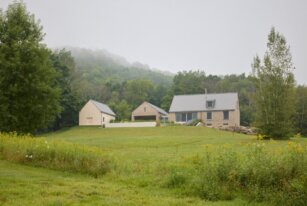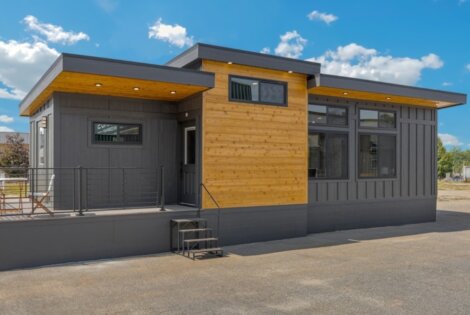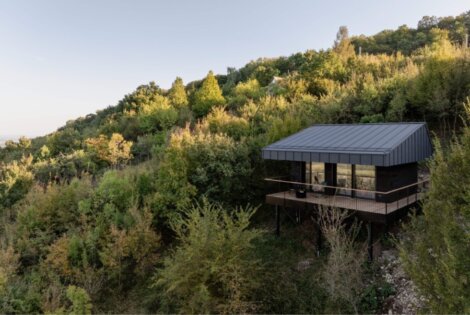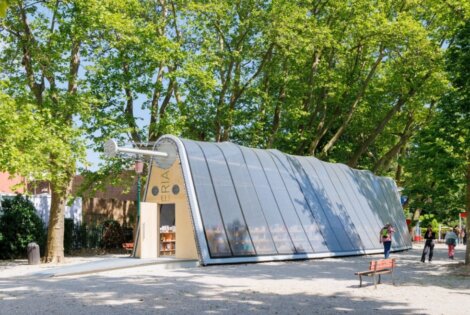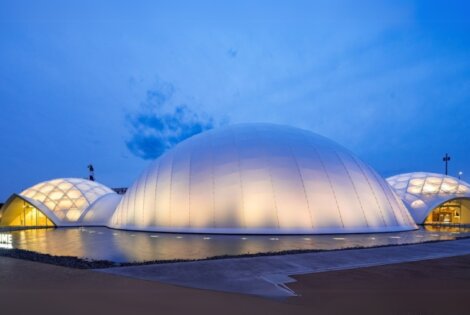GMP Architekten has completed the renovation of the post-war Hyparschale Hall in Magdeburg, Germany, which sits alongside the Elbe River within a large park. It is one of the many shell-roofed structures designed by Ulrich Müther in the late 1960s featuring four hyperbolic paraboloids arranged into a square and is the largest of Müther’s building designs saved from demolition. The building was spared after it was listed as a historic monument in 1998.
The Magdeburg office commissioned GMP Architekten to renovate and reopen Hyparschale Hall as a multifunctional venue for exhibits and events. The team strengthened and restored the original structure using carbon-fiber reinforced concrete. They also restored the rhythmically lined fins on the building’s exterior and swapped the translucent glazing with transparent glass for views across the local park.
Moreover, the previously closed roof lights (closed due to leakage) are now open to bathe the interior with natural light. Speaking of the interior, the Hyparschale Hall is spacious and column-free thanks to the tall roof structure. The roof measures 12 meters tall at its center and curves upward to nearly 16 meters high per corner. Then the studio integrated four 15-meter-square cubicles inside to serve as functional spaces for hosting events, seminars, exhibitions, and more.
GMP Architekten built the new internal structures from steel according to the building’s original design. They then aligned these cubes with the building’s square grid layout and connected them via a network of raised bridges. These bridges offer circulation across the upper floor, while partitions serve to divide the ground floor spaces.
Learn More Here
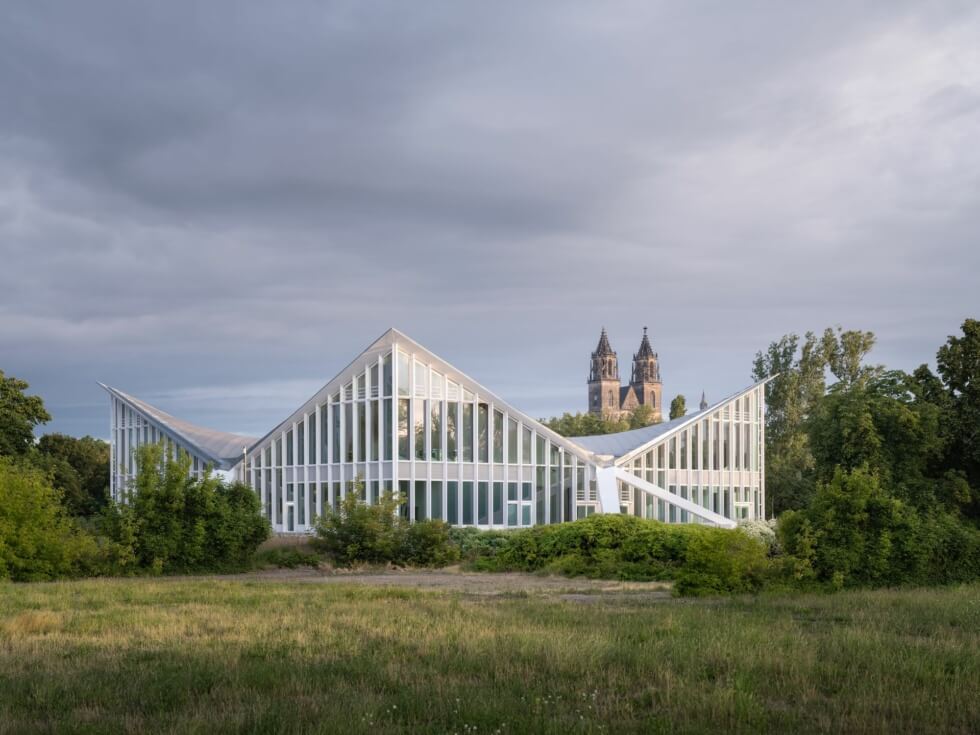
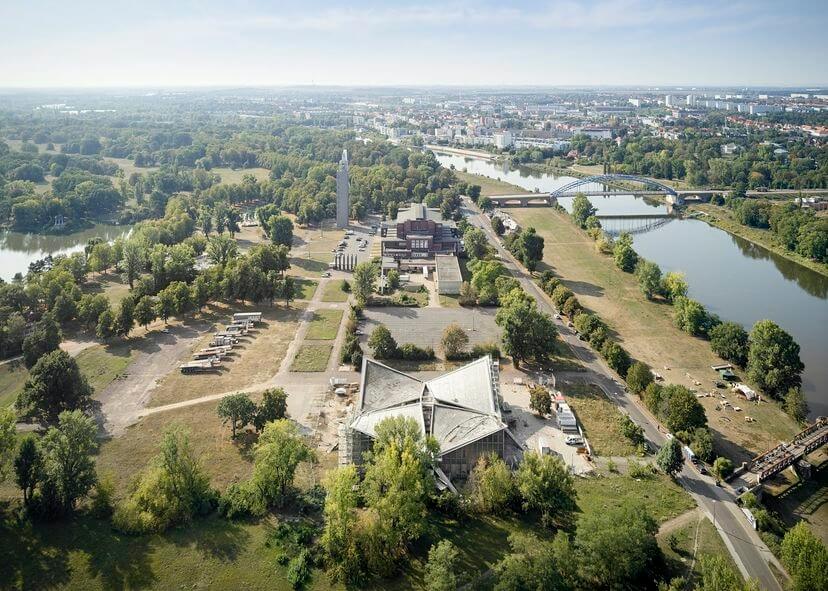
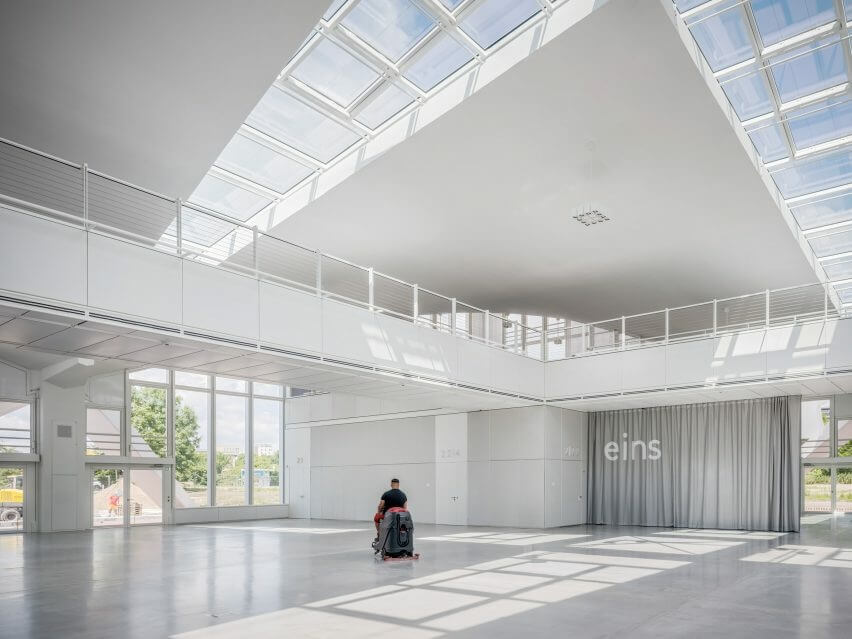
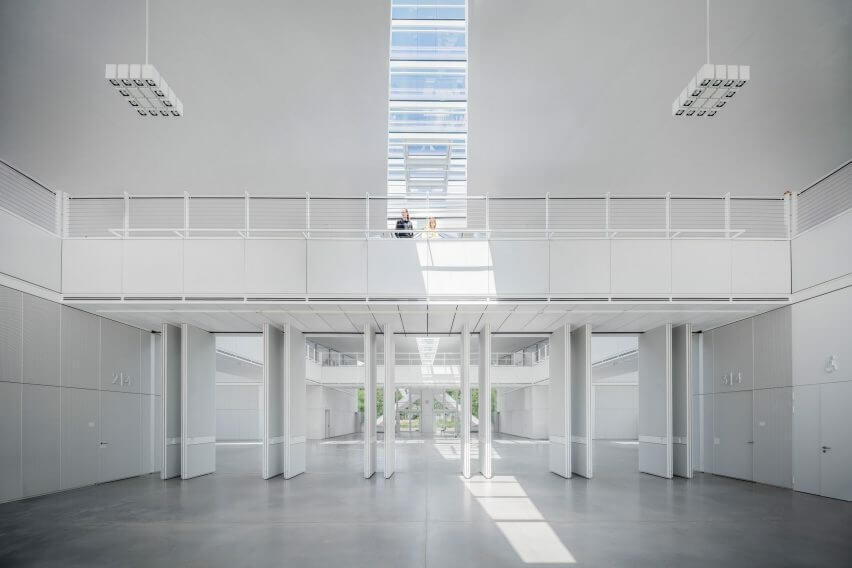
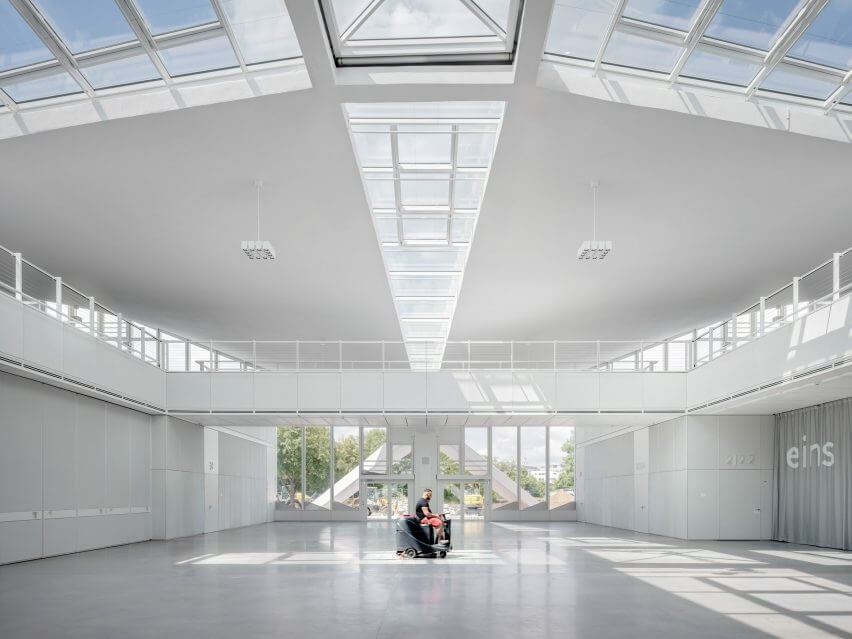
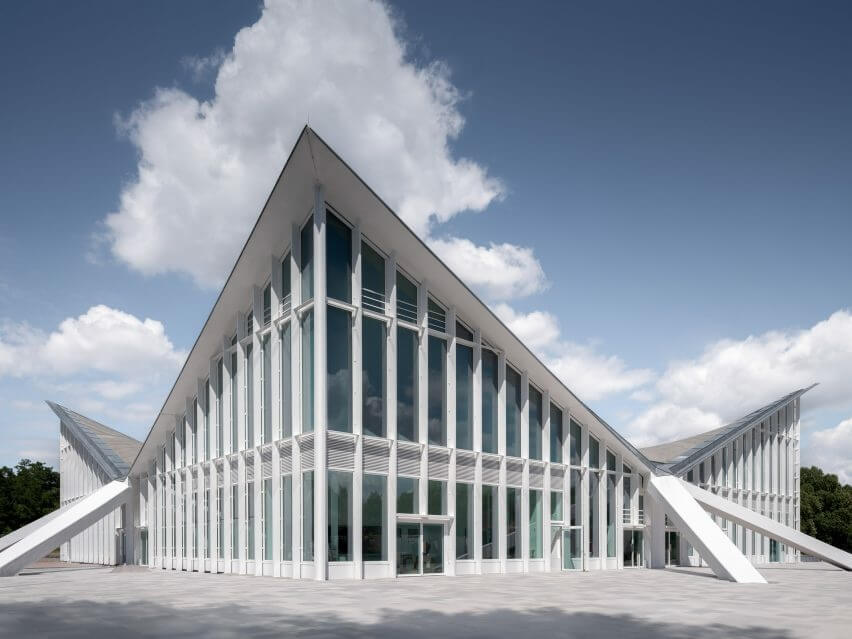
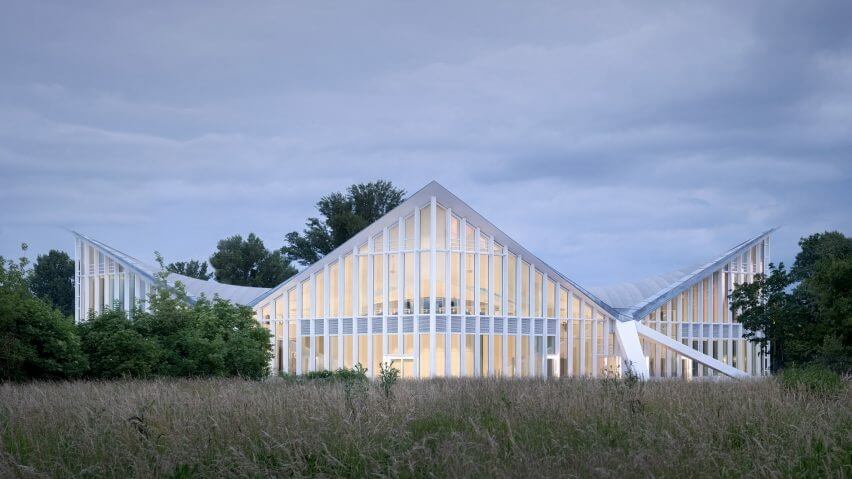
Images courtesy of Marcus Bredt /GMP Architekten

